This marks the seventh NARA Wine Meeting organized by Eiji-san. These events feature diverse themes, ranging from purely enjoying wine and food, to academic discussions, or strengthening wine tasting skills. Each meeting brings a fresh theme, providing an engaging experience for participants.
As noted in the title, this time, the focus is on Mediterranean wines paired with a special dinner crafted by a chef. It’s the perfect way to embody the summer vibe—’Summer is the Mediterranean,’ indeed.
Here’s a report on a previous NARA Wine Meeting that Comuny participated in.
What kind of event was it this time?
Let’s jump right into it
check it out!
European-style bistro ‘En,’
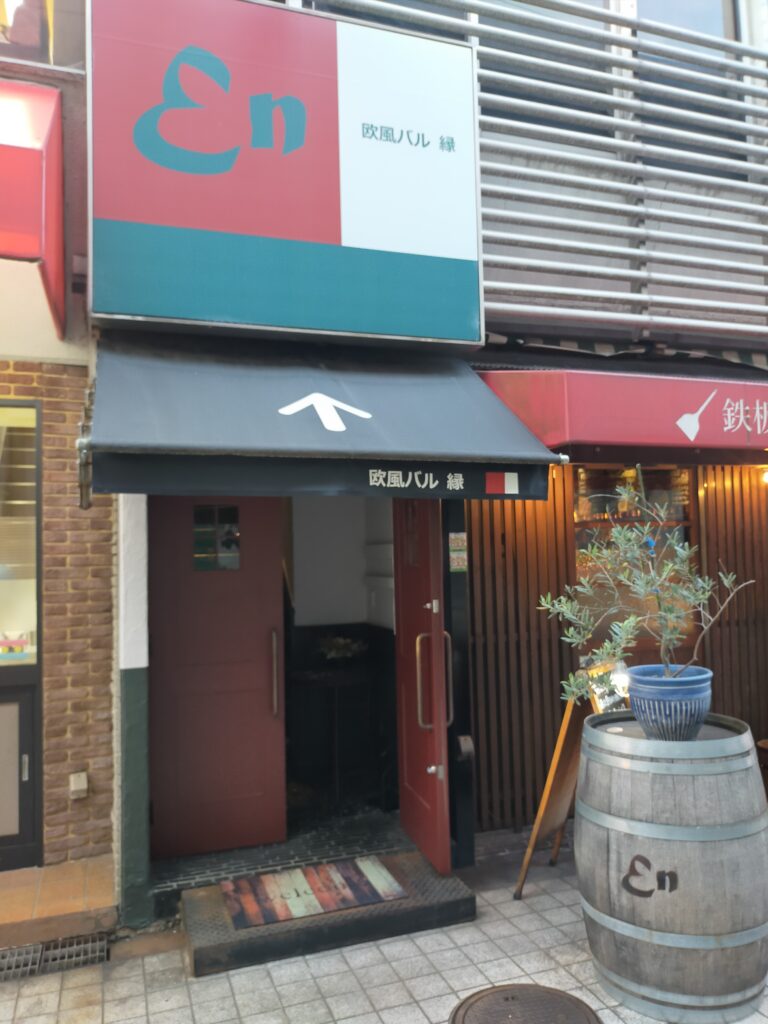
“This time, the event was held at the European-style bistro ‘En,’ located near Kintetsu Tomio Station. This restaurant has been a venue for the NARA Wine Meetings since the days when they were called the TOMIO Wine Meetings.
The organizer, Eiji-san, and the chef who owns the restaurant are classmates and have even worked together. It’s clear that we can expect great wine pairings—there’s no doubt about it.
From the official website, here’s a brief introduction to the restaurant.
The restaurant combines French cuisine with a bistro-style atmosphere. You can enjoy authentic French dishes in a casual setting reminiscent of an izakaya. The head chef, having trained at renowned French restaurants, adds unique creativity to the menu, offering innovative and original dishes.
Not only is the food exceptional, but the restaurant also places great importance on creating a relaxed and comfortable environment for its patrons. As part of its COVID-19 precautions, the establishment implements thorough measures, including disinfection, masks, ventilation, and acrylic dividers on tables, ensuring a safe and secure dining experience. Please feel free to visit with peace of mind.
My apologies for my lack of vocabulary, but this place is incredibly stylish and has such a wonderful atmosphere.
Increase in membership fee
Upon arriving at the venue and just about to pay the membership fee, Eiji-san, looking extremely apologetic, said:
‘I’m terribly sorry, but I have to ask for a small increase in the membership fee…’
He’s always treated us to incredibly generous additional wines, and the impact of rising prices is starting to show these days.
Considering how remarkable and educational these meetings are, being able to experience such a wonderful event in Nara, it’s necessary to accept a moderate fee increase to maintain the sustainability of the gatherings.
‘Could I please ask for an increase from 8,800 yen to 9,000 yen…?’
…
This is entirely within the margin of error.
I don’t know anyone else who would feel this apologetic over a 200 yen increase. You can really sense Eiji-san’s personality shining through.
And let me just emphasize—this price includes not only the wine but also the dinner!
the start of the wine meeting
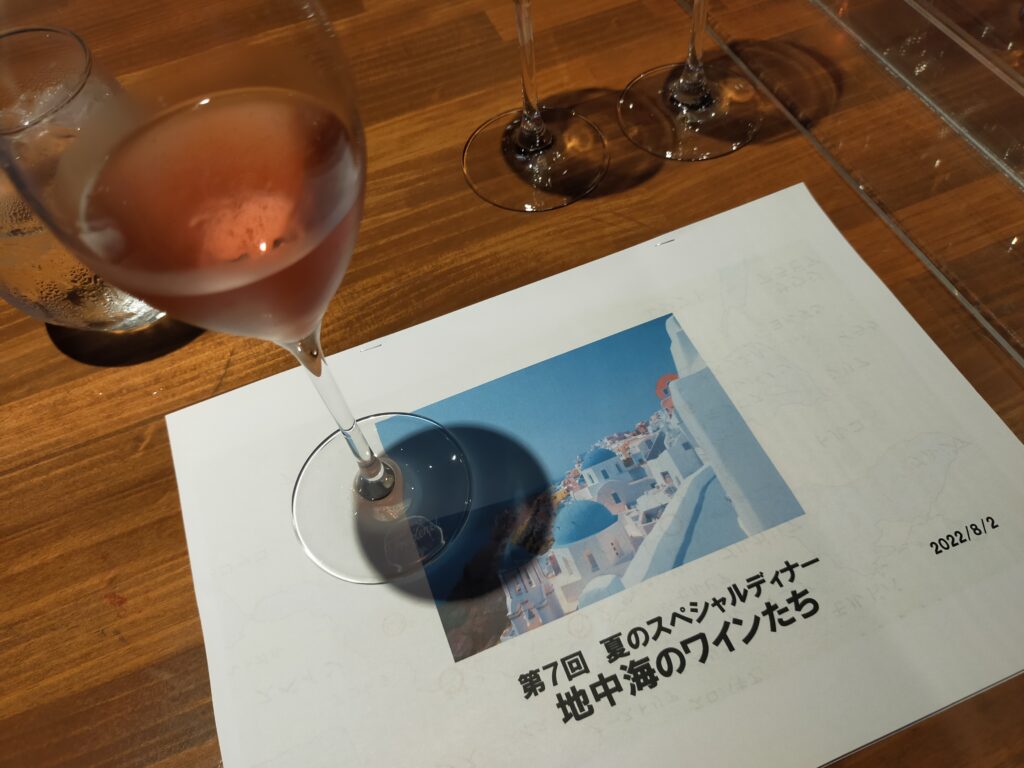
Once again, members gathered from as far as Kanagawa and Shiga Prefecture, a testament to Eiji-san’s remarkable influence.
As the event began and all the members had gathered, sparkling wine for the toast was distributed.
The opening act of the evening was this sparkling wine.
Kir-Yianni “Akakies” Rose 2020
This sparkling rosé comes from the Macedonian region of Greece and is made from the Xinomavro grape variety, characterized by its deep pink and beautifully vibrant color.
Xinomavro is one of Greece’s most iconic black grape varieties, used to produce long-aging red wines and sparkling rosé wines. The name ‘Xino’ means ‘acid’ and ‘Mavro’ means ‘black,’ reflecting the grape’s high acidity and strong tannins.
Matured wines from this variety are often mistaken for Barolo, as mentioned in the textbooks—highlighted notes from exams I had once committed to memory, but they seem to have entirely slipped my mind.
Known for producing bold wines, the Xinomavro grapes for this particular sparkling wine were apparently harvested from high-altitude vineyards (possibly on the other side of the mountains from Naoussa?).
As for the taste, it offers charming aromas of red berries, accompanied by gentle, creamy bubbles. There’s a touch of sweetness, balanced by the acidity (yes, ‘Xino’) that tightens the flavor profile, making it perfect for this hot season.
It’s simply amazing!
Zagros / Offida DOCG Pecorino 2018
This time, the wine was served at a slightly lower temperature, specifically to pair with the salad.
The aroma had hints of yellow peach and a green, herbal character, complemented by acidity that offered a pleasant contrast with notes of saltiness and bitterness.
(Does that sound about right?)
As we enjoyed the meal, time passed, and the wine’s temperature gradually rose, allowing the aroma to blossom even further.
Though it might be an exaggeration to say ‘honey,’ there was a hint of sweetness in the fragrance (pardon my limited vocabulary). This sweetness linked to the peach notes, while the elegant saltiness of the karasumi (dried mullet roe) harmonized beautifully with the wine’s elements, completely evoking a Mediterranean sensation in the mouth (however mysterious that may sound).
It was absolutely delightful.
Chateau de l’Aumerade / Cuvee Marie Christine Provence Rose 2020
This rosé wine comes from the Provence region of France. It boasts a beautiful salmon-pink hue, and its bottle and label design are both stylish and striking.
Made from a reliable blend of Cinsault, Grenache, and Syrah, it offers a crisp mouthfeel with a hint of basil-like aromas. This versatile wine seems to pair not only with Southern French cuisine but also with a variety of dishes.
It has even won a Gold Award at the Sakura Awards, making it a sure bet.
And here is the dish paired with it.
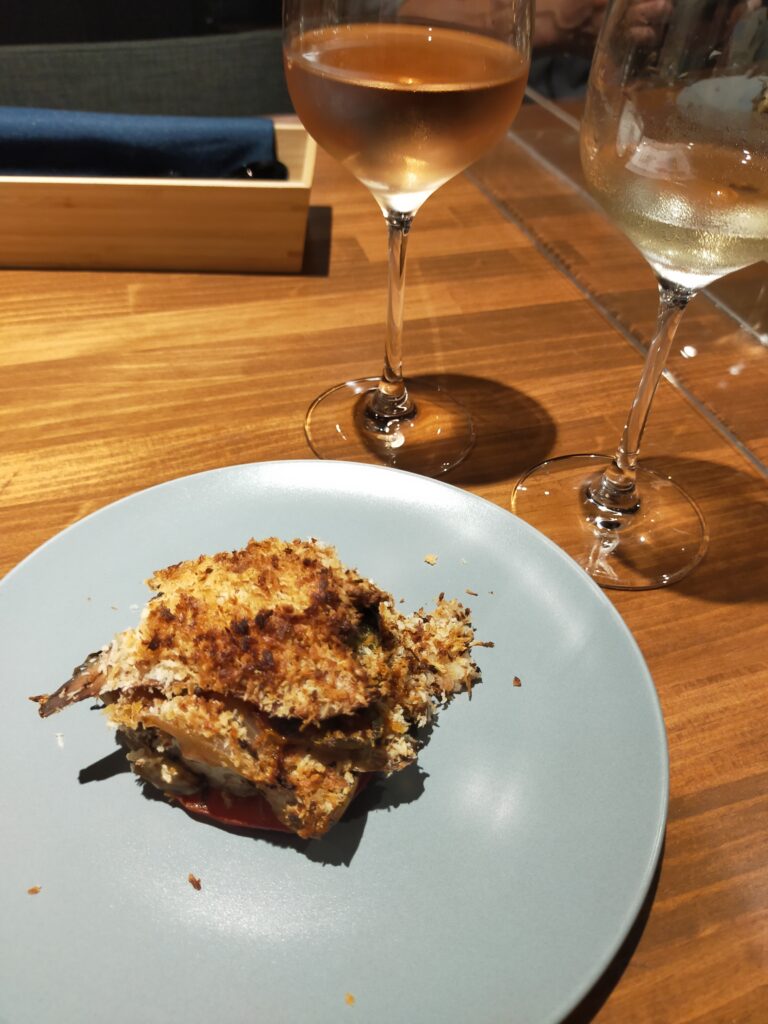
Oven-baked Summer Vegetables
Eggplant, perhaps Manganji peppers, onions, and tomatoes—delicious summer vegetables paired with the rich flavor of sardines.
The aroma of Herbes de Provence (a herb mix commonly used in Southern France) and the crunchy, golden-baked breadcrumbs are simply irresistible.
The preparation is meticulous yet avoids unnecessary fuss, allowing the natural flavors of the ingredients to shine through perfectly.
This is exactly the kind of dish that pairs beautifully with Provençal rosé. Absolutely delicious.
Incidentally, pairing this dish with the Offida Pecorino from earlier was also incredibly enjoyable (just my personal opinion)
Domaine Sigalas / Santorini Assyrtiko Barrel 2020
This island is said to have been formed by volcanic activity, giving it a crescent shape.
According to textbooks, Santorini Island stands out as exceptional in terms of the uniqueness of its wine.
The sandy vineyards, based on volcanic soil, contain minimal organic matter and are free from the threat of phylloxera. As a result, ungrafted grapevines can survive, with an average lifespan exceeding 50 years. To withstand strong winds, the vines are trained into a basket-shaped structure known as ‘Kouloura,’ which sprawls close to the ground.
cite the source from the JSA Textbook.
“Due to the sandy soil, strong winds, and very dry conditions, the basket-shaped training of the vines helps the leaves capture the minimal amount of moisture that evaporates from the ground, maintaining a moderate level of humidity (by promoting retention).
This ingenious method of managing humidity, tailored to low-humidity environments, stands in stark contrast to the techniques used in Japan, which face the opposite challenges.
As for the wine’s flavor, it exudes the crisp acidity and herbal aromas with faint salty nuances that are characteristic of Assyrtiko. Additionally, the elegant vanilla-like aroma from barrel aging adds depth to the experience.
Absolutely delicious!
While it’s not a typical pairing, this wine was served alongside a corn soup that had been delicately strained. The combination was remarkable.
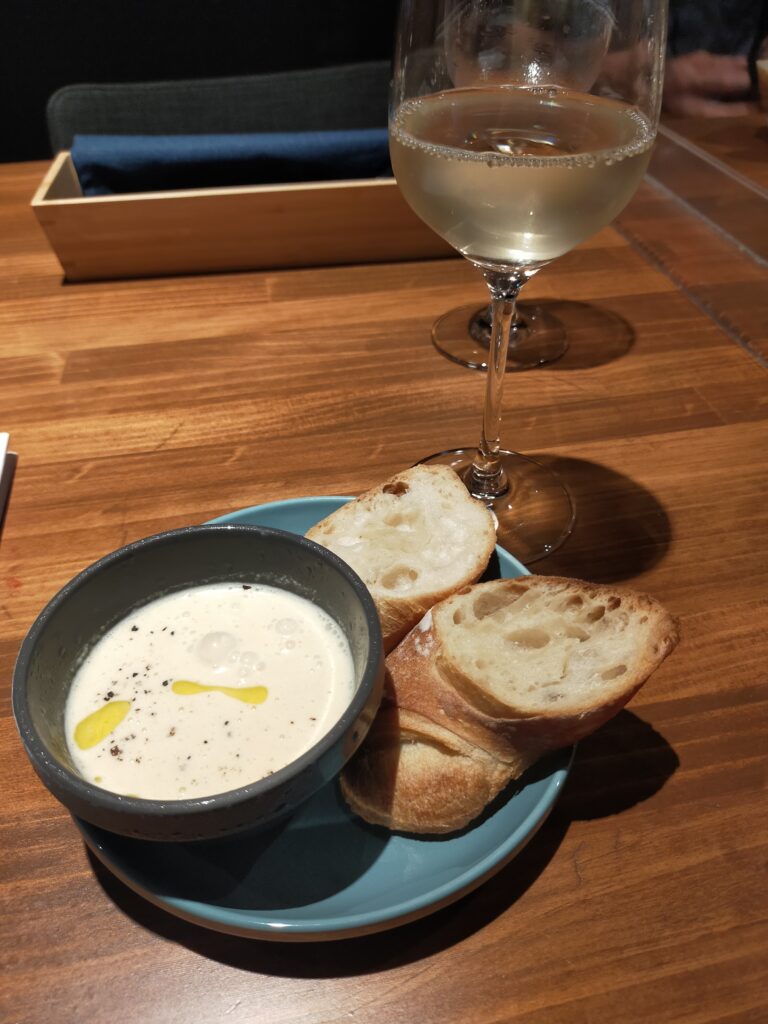
I dipped the accompanying baguette into the soup.
The sweetness of the corn was enhanced by the acidity of the Assyrtiko wine, and the subtle vanilla aroma of the wine added a sense of luxury to the corn soup.
The combination complemented each other so well—it was a truly fascinating experience.
Before I knew it, I had devoured everything while thinking, ‘Delicious, simply delicious.’
By the way, regarding the ‘Kouloura’ training method, I learned that the vines are pruned drastically every 25 years. It made me wonder—how exactly is this pruning done? And how many grape clusters can be harvested from a single Kouloura?
Despite the harsh conditions on this volcanic island, the passion of those who first started cultivating here and the dedication of the producers who have continued this tradition is awe-inspiring. I can’t help but respect them deeply.
It seems to me that the Assyrtiko grape variety’s ability to retain acidity plays a significant role in its success.
This wine provided an incredibly enriching learning experience.
4kilos / 4kilos Vinicola 2016
The next wine comes from Mallorca, one of the Balearic Islands in Spain. Mallorca is an island off the coast of Valencia, and its winemaking history dates back to Roman times.
Although it suffered devastating damage from phylloxera, winemaking was revived in the late 20th century.
Mallorca is also famous as the former home of soccer player Takefusa Kubo’s team, which is unfortunately the only impression Komuni has of it.
Apologies to the people of Mallorca.
This wine is apparently made from a native grape variety called ‘Callet,’ which I was unfamiliar with as well. I apologize once again.
Now, as for the taste—how should I describe it?
Wine typically has various elements like fruitiness, acidity, and tannins, with each variety having its own distinct feature that stands out. However, this particular wine doesn’t feel like anything is overly prominent.
In a good way, it’s free of peculiarities—easy to drink and delicious. Yet, it doesn’t feel small in scale either.
The fact that it’s a 2016 vintage and has benefited from aging might be one factor contributing to its character.
Here’s the dish that was served alongside it.
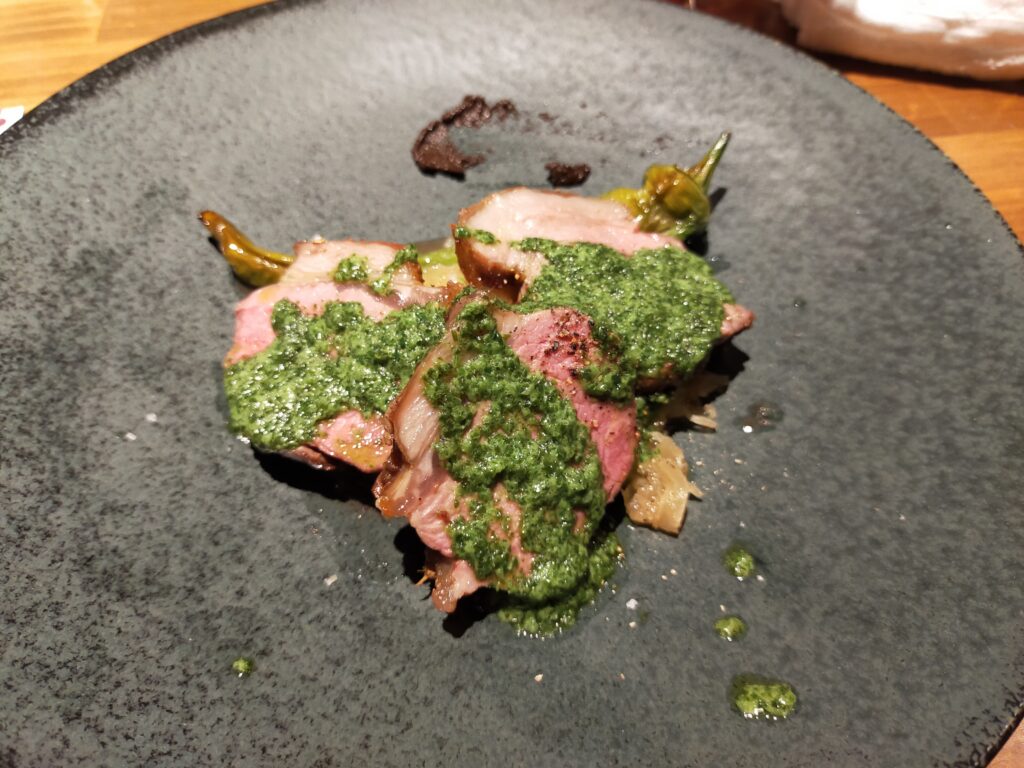
Roasted lamb served with a sauce made of parsley, garlic, and butter.
As for the sides, there was something resembling sauerkraut with a tangy flavor, sautéed Manganji peppers, and a puree of black garlic and olives.
It was absolutely delicious.
While munching on the dish and sipping the wine, I was astonished.
Though the wine initially didn’t seem outstanding on its own, it completely transformed when paired with the food.
Perhaps its balance is the key—none of its components overshadowed the flavors of the dish at all.
The unique aroma of lamb fat paired beautifully with the gentle fruitiness of the wine.
The meat had a delightful tenderness with just the right amount of chew, complemented by the moderate tannins.
The tanginess of the sauerkraut-like side was complemented by the wine’s gentle acidity.
The Manganji peppers added a faintly green flavor.
Meanwhile, the richness of the dish did not overwhelm the refreshing parsley sauce, which melded seamlessly with the wine and supported the lingering notes of the sauce.
The wine truly blossomed with the food—perfectly embodying the idea of ‘wine transformed by food.’
This subtle flavor profile revealed itself as a testament to the wine’s depth.
Perhaps likened to a reserved hawk hiding its talons (though perhaps that comparison isn’t quite right).
My apologies for initially saying it lacked character.
Wines that are enjoyable on their own are great, but discovering how wine can evolve alongside food is such a joy.
This was yet another wine full of valuable learning experiences.
Domaine Sigalas / Santorini Vinsanto 2015
“The previous red wine marked the end of the lineup for this wine meeting.
However, once again, Eiji-san surprised us with an additional wine.
A heartfelt thank you for such a wonderful gesture.
“This wine, once again from Santorini Island, is made from Assyrtiko and Aidani grapes grown in the Kouloura style, which already yields a low harvest and requires significant effort. After being harvested, the grapes are sun-dried for two weeks to concentrate the moisture before the wine is aged in oak barrels for six years—a truly cash-flow-challenging process.
It’s at a level that makes you wonder, ‘Can they even sustain this?’ Perhaps they’d respond, ‘It’s none of your business to worry about us!’
Apparently, it takes as much as 4 kilograms of grapes to produce a single bottle of this wine. Their uncompromising dedication and meticulous craftsmanship are genuinely admirable.
To pair with this richly concentrated wine, I opted for a brûlée with a perfectly caramelized surface.
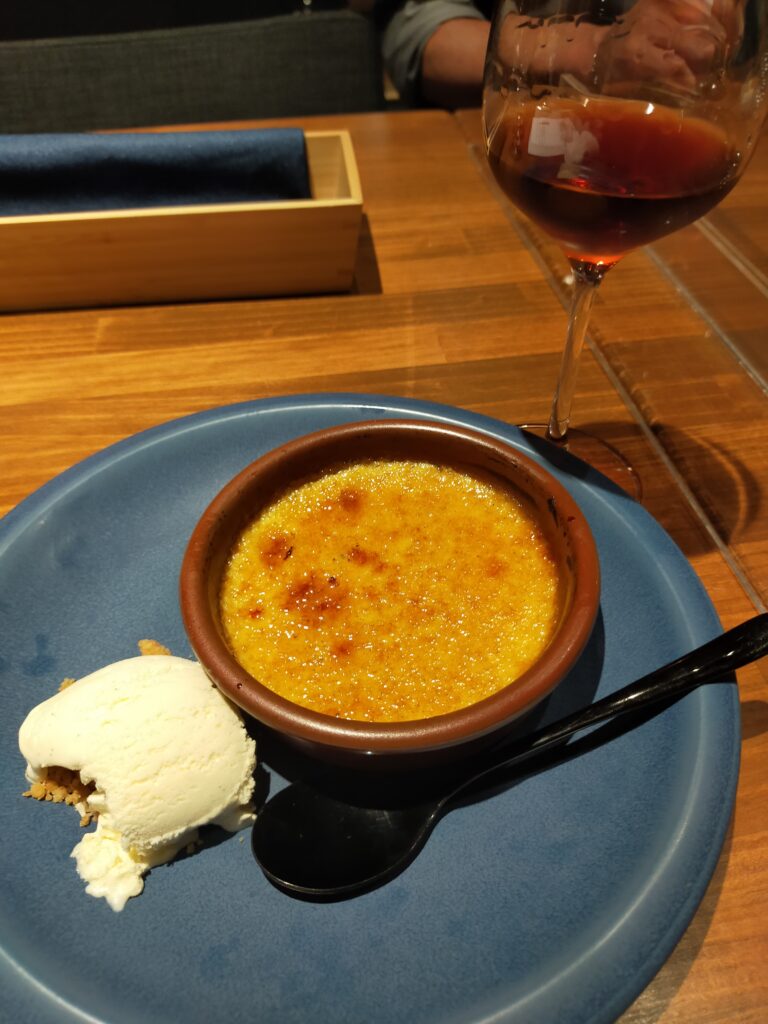
With aromas of raisins and apricots, reminiscent of dried fruits, and a caramel-like fragrance from the burnt sugar, this wine is truly indulgent.
Its rich sweetness and refreshing acidity, along with its full-bodied finish, perfectly hold their own against the dessert’s sweetness.
It’s simply irresistible.
While Vinsanto is famously known as a dessert wine from central Italy (Tuscany and Umbria), it is said that its origins actually trace back to Greece.
The ‘Santo’ in Vinsanto refers to Santorini Island—fascinating, isn’t it?
While Italian Vinsanto is made using a drying method in the shade, Santorini’s Vinsanto uses sun-drying.
According to Eiji-san: ‘I imagine Italian Vinsanto producers would also prefer to dry their grapes in the sun if they could.’
It really does feel like Santorini stands as the true original.
To conclude:
How was it for you?
I personally feel that this article ended up being unusually educational for the Komuni Blog.
For those who found no educational value in it, I’ll prepare myself to bow deeply and apologize individually later.
The flow of the event, which was presented in a way that resembled the journey of wine across the Mediterranean, was truly impressive and a testament to Eiji-san’s expertise.
Being able to try wines that you’ve only heard of or would not usually choose on your own, along with detailed explanations, is genuinely one of the highlights of this gathering.
It’s a place where wine beginners, those aiming to obtain certifications, and even certified professionals can enjoy and learn.
In a place like Nara, rather than a bustling city, being able to host such opportunities is something for which we can only feel gratitude.
Let’s uplift Nara together!
You can truly feel the passion behind it.
Though there’s only so much I can do, I, Komuni, would like to contribute and help uplift Nara as well.
I’m already looking forward to the next event!
See you again soon!
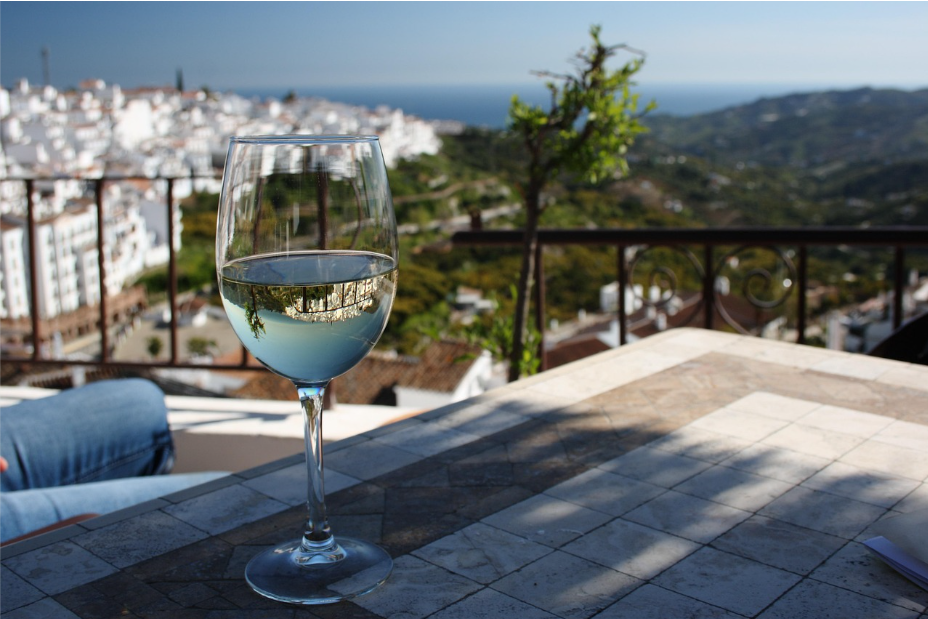


![[商品価格に関しましては、リンクが作成された時点と現時点で情報が変更されている場合がございます。] [商品価格に関しましては、リンクが作成された時点と現時点で情報が変更されている場合がございます。]](https://hbb.afl.rakuten.co.jp/hgb/2aa37abb.7405661b.2aa37abc.b673bc88/?me_id=1224100&item_id=10016818&pc=https%3A%2F%2Fthumbnail.image.rakuten.co.jp%2F%400_mall%2Fledled%2Fcabinet%2F%2Fimg044%2Fkry-aka-spk-r_s.jpg%3F_ex%3D240x240&s=240x240&t=picttext)

![[商品価格に関しましては、リンクが作成された時点と現時点で情報が変更されている場合がございます。] [商品価格に関しましては、リンクが作成された時点と現時点で情報が変更されている場合がございます。]](https://hbb.afl.rakuten.co.jp/hgb/463c04d2.c39c5d68.463c04d3.de787e0a/?me_id=1261526&item_id=10023598&pc=https%3A%2F%2Fthumbnail.image.rakuten.co.jp%2F%400_mall%2Fdonguriano%2Fcabinet%2F03129944%2F03206886%2Fimgrc0079103885.jpg%3F_ex%3D240x240&s=240x240&t=picttext)
![[商品価格に関しましては、リンクが作成された時点と現時点で情報が変更されている場合がございます。] [商品価格に関しましては、リンクが作成された時点と現時点で情報が変更されている場合がございます。]](https://hbb.afl.rakuten.co.jp/hgb/2a494f66.3ee069da.2a494f67.400ac470/?me_id=1247474&item_id=10009665&pc=https%3A%2F%2Fthumbnail.image.rakuten.co.jp%2F%400_mall%2Ftochikame%2Fcabinet%2Fitem%2F1005000100.jpg%3F_ex%3D240x240&s=240x240&t=picttext)
![[商品価格に関しましては、リンクが作成された時点と現時点で情報が変更されている場合がございます。] [商品価格に関しましては、リンクが作成された時点と現時点で情報が変更されている場合がございます。]](https://hbb.afl.rakuten.co.jp/hgb/463c1fa6.2ac1fdaf.463c1fa7.3df692e9/?me_id=1253274&item_id=10029133&pc=https%3A%2F%2Fthumbnail.image.rakuten.co.jp%2F%400_mall%2Fauc-masuya%2Fcabinet%2Fmot%2F610222.jpg%3F_ex%3D240x240&s=240x240&t=picttext)
![[商品価格に関しましては、リンクが作成された時点と現時点で情報が変更されている場合がございます。] [商品価格に関しましては、リンクが作成された時点と現時点で情報が変更されている場合がございます。]](https://hbb.afl.rakuten.co.jp/hgb/2a494f66.3ee069da.2a494f67.400ac470/?me_id=1247474&item_id=10007623&pc=https%3A%2F%2Fthumbnail.image.rakuten.co.jp%2F%400_mall%2Ftochikame%2Fcabinet%2Fit3%2F1005000309v15.jpg%3F_ex%3D240x240&s=240x240&t=picttext)


コメント